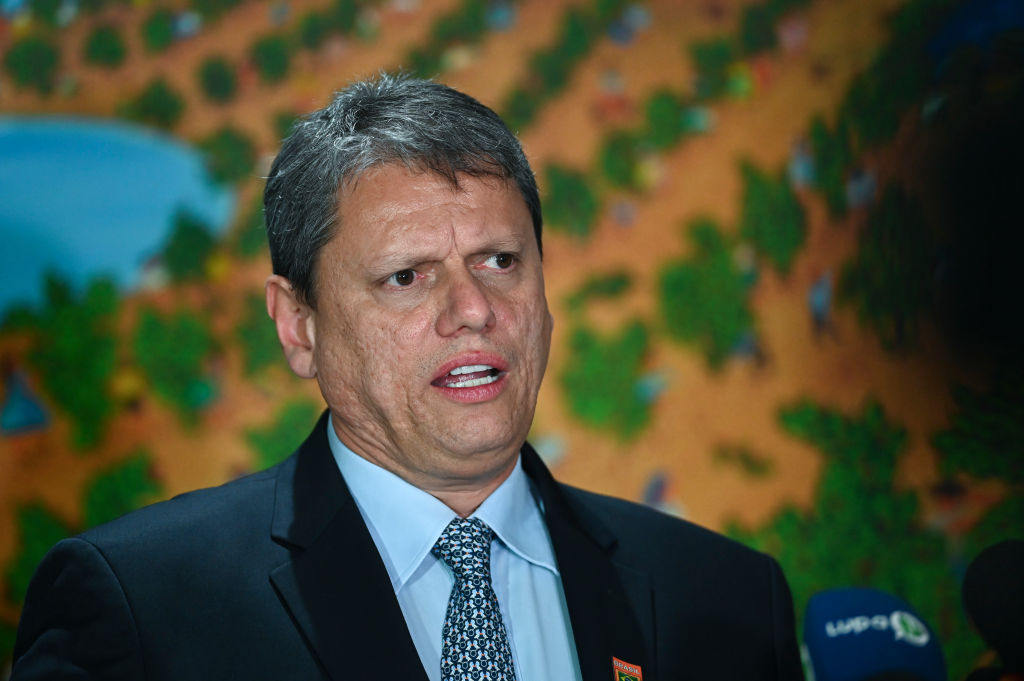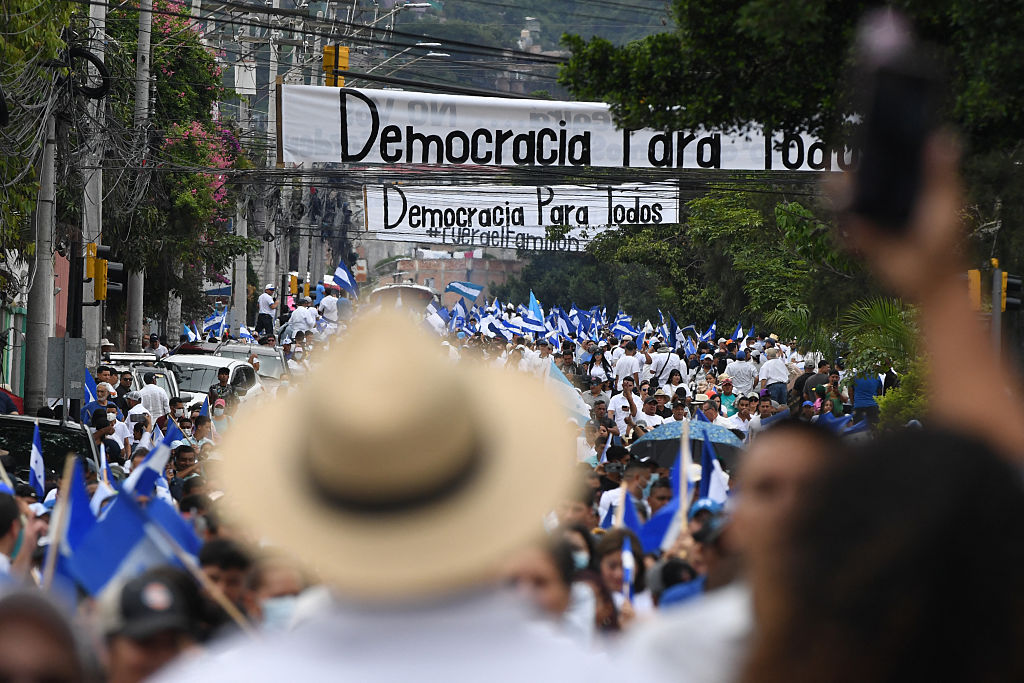The Reality of Mexico\'s Electoral Process
The Reality of Mexico\'s Electoral Process
Anybody relying on the media coverage of last July’s national elections in Mexico can be forgiven for getting the impression that the proceedings were, as was historically the case, irredeemably corrupt. These images do not come close to matching the facts.
Anybody relying on the media coverage of last July’s national elections in Mexico can be forgiven for getting the impression that the proceedings were, as was historically the case, irredeemably corrupt. Certainly that was the message promoted by the losing candidate, Andrés Manuel López Obrador (Democratic Revolutionary Party-PRD), who cried foul, called for a general strike, demanded a recount of 42 million ballots, and even threatened to shut down the government. The protest continued for weeks, prompting talk of a populist revolution and a media bonanza complete with seething street demonstrations and excited politicians.
These images do not come close to matching the facts. The Mexicans staged the fairest national elections to take place in their country in living memory. With a host of measures designed to ensure transparency and a level playing field among candidates, they showed signs of a political maturity of the highest order; in fact, their nominally democratic neighbor north of the Rio Grande might do well to take some instruction from Mexico.
I can speak with authority because I served as one of a large delegation of observers appointed to monitor the election along with Mexican NGOs and representatives of the European Union. It was the ninth election to which I’ve been asked to bear witness in Mexico and Central America over the last twenty years—in one of them, El Salvador in 1984, at least scores of people were killed by insurgent guerillas on election day. In the 1970s and 1980s, it was not unusual to come across some municipalities in the region giving 98% of their vote to the ruling party candidate.
This year’s national elections in Mexico (not only for president but also for the 500 members of the Chamber of Deputies and 128 senators) were organized by the non-partisan Federal Electoral Institute (IFE). To put the scope of their work and support in perspective, it is worth mentioning that almost $4 million was allocated to Mexican NGOs providing election observers, and, to ensure fair and transparent monitoring, the fund was managed by the United Nations Development Program. Approximately 95% of all citizens eligible to vote and residing in Mexico were registered to vote. (Incarcerated persons or those awaiting trial cannot vote in Mexico.) In addition, 97% had voter I.D. cards. The IFE printed almost 221 million ballots for the congressional and presidential elections along with organizing the placement of 300,000 ballot boxes in over 130,000 polling stations. Throughout the country, 27,000 IFE electoral trainers and supervisors instructed 913,000 citizens on how to open and run polling stations; each station welcomed the observation of political party representatives.
But what of the actual mechanisms in voting? Each voter had to present a voter registration card with a photo I.D. plus name, address, fingerprint, electoral code and voting location. To verify voter identity, each polling station then matched I.D. cards to a book containing pictures of voters. Each voter’s thumb was marked with a special ink to prevent duplicate voting.
The ballot itself was paper - no “hanging chads,” electronic voting machine errors, deceased voters, or insufficient voter I.D. The ballot was produced with state-of-the-art anti- counterfeit measures such as water marks with the IFE logo, visible optic fibers, as well as invisible optic fibers seen only through ultraviolet light.
At the close of the election, ballot boxes were opened and counted by electoral officials with party representatives and electoral observers present. Vote tallies were then electronically sent to the IFE offices for results certification. There were hardly any irregularities, certainly not to justify a recount of all 42 million ballots.
Were there problems? Yes, for example, there were not enough ballots at the “Casillas Especiales” polling stations – special polling sites for out of town (non-resident) voters. There were also accusations of government social program spending being used to influence voters in certain states and municipalities. Interestingly enough, most of the money was spent where the PRD coalition ended up receiving the most voters. Concerns were also raised about some polling places not having enough ballots, long waits, and the usual accusations about manipulation of voter turn-out.
The Federal Electoral Tribunal (TRIFE) ordered a recount of over 11,000 “Casillas,” approximately 9% of the total, as part of the PRD’s challenges in 149 electoral districts mainly won by Calderón. The bipartisan Tribunal unanimously found that the election was won validly by Calderón. By the way, Calderón’s National Action Party also challenged the vote totals in certain districts.
Another area of interest was the media and the question of transparency and fairness. Among the requirements, candidates were required to provide timely financial disclosures of their media and press expenditures. Most novel was a ban on government advertising commencing 40 days prior to the election. A prohibition against all campaigning three days before and during election day would no doubt be most welcome in our country.
The rules prohibited the current president, governors and municipal presidents from directly engaging in campaign activities. Incumbent officials were prohibited from expressing support for a candidate in speeches or paid publicity. Political parties were required to provide detailed expenditure reports related to media and printing contracts on March 30 and May 30. Another monitoring service by IFE tracked the major TV and radio newscasts transmitted by national and local stations. By the end of the campaign, one survey showed each party spending relatively equal amounts of time on television, with a slight edge to the PRD. And although the IFE has no regulatory power, it could inform the public about the treatment each party and candidate was receiving in the media. As a result, it appears that Mexico had more balanced news coverage on national TV and radio - something we in the U.S. might well contemplate.
Like all systems, Mexico’s and ours have faults. But as we move ahead, our southern neighbor appears to have a willingness and desire to continue improving its system of democratic elections. Regardless of electoral flaws, we all have a lot to learn from Mexico.
As Winston Churchill once remarked, “Democracy is the worst system of governance, except for all the others!”
Maurice Sonnenberg is with the firms of Bear Stearns & Co. Inc., and Greenberg Traurig, LLP. He has been an advisor to five Presidential administrations in the areas of finance, trade, foreign affairs, and intelligence.
ABOUT VIEWPOINTS AMERICAS
ViewPoints Americas is a publication of the Americas Society and the Council of the Americas. It helps Council member companies achieve their business goals by stimulating thoughtful debate on the most pressing issues facing Latin America. The positions and opinions expressed in this publication are those of the authors or guest commentators and speakers and do not represent those of the Americas Society and the Council of the Americas or its members or the Board of Directors of either organization. No part of this publication may be reproduced in any form without permission in writing from the Americas Society and the Council of the Americas.








